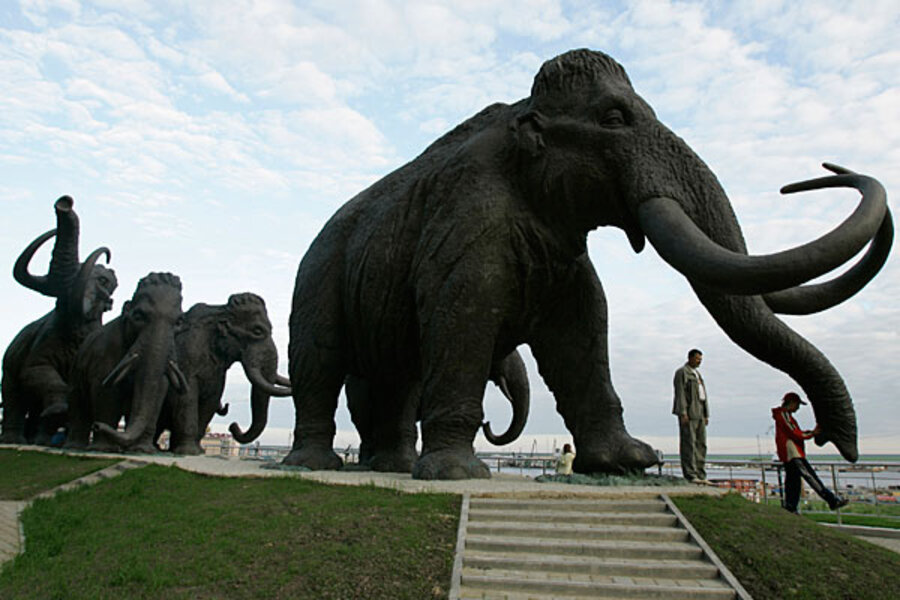Pleistocene Park? Scientists edge closer to cloning woolly mammoth.
Loading...
| Moscow
Scientists who found well preserved woolly mammoth remains in a remote part of Russia hope they might contain the necessary material to clone the long extinct beast.
The Russian-led international team found the remains, including fur and bone marrow, with some cell nuclei intact, in the Ust-Yansk area of the Yakutia region on Russia's Arctic coast.
The next step will be to search for living cells among the material which was preserved in the Siberian permafrost, said the Russian scientist who led the expedition with members from the United States, Canada, South Korea, Sweden and Great Britain.
"All we need for cloning is one living cell, which means it can reproduce autonomously. Then it will be no problem for us to multiply them to tens of thousands cells," said Semyon Grigoryev, a professor at North-East Federal University (NEFU).
However, media reports that the scientists were close to making a "Jurassic Park"-style breakthrough by bringing the giant mammal back to life after thousands of years of extinction, were exaggerated.
"We are counting on our region's permafrost to have kept some cells alive. But it is unlikely," said Grigoryev, pointing out that the remains would need to have been at a stable temperature between -4 and -20 Celsius (between 28 and -4 Fahrenheit) for any cells to remain alive.
Some media had reported that living cells had been discovered, but Grigoryev said that had been due to a translation error as the word "intact" had been translated from English into Russian as "living".
"What we have found are intact cells, with a whole nucleus," he said, adding that living cells, if found, would provide the necessary samples to make a living clone.
The Yana 2012 expedition found the remains last week at the depth of 5-6 metres (16-20 feet) in a tunnel dug by locals searching for rare and valuable mammoth bone.
A previous find, discovered in the same region two years ago, yielded the remains of a 40,000-year-old female baby woolly mammoth, named Yuka by scientists, as well as those of an ancient bison and horse. Those finds lacked living cells.
To determine whether the cells are living, they will be examined by a South Korean scientist, Hwang Woo Suk, whose Sooam Biotech has done several animal clonings, including the world's first commercial dog cloning.
Scientists have made several attempts to revive mammoths using cells of remains since 1990s, none of them successful. (Editing by Robin Pomeroy)





